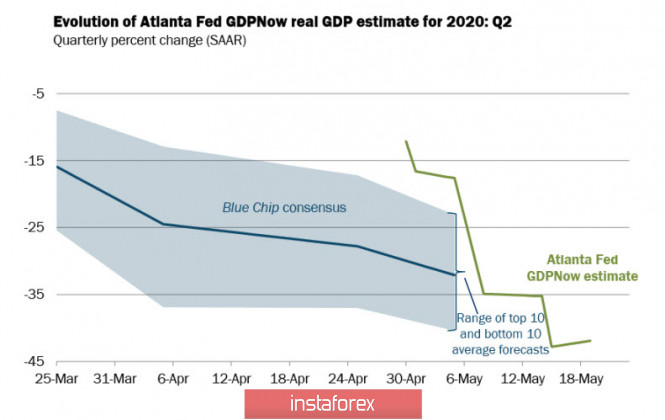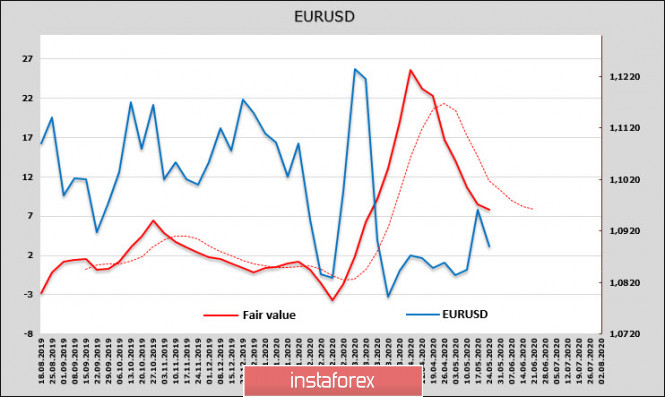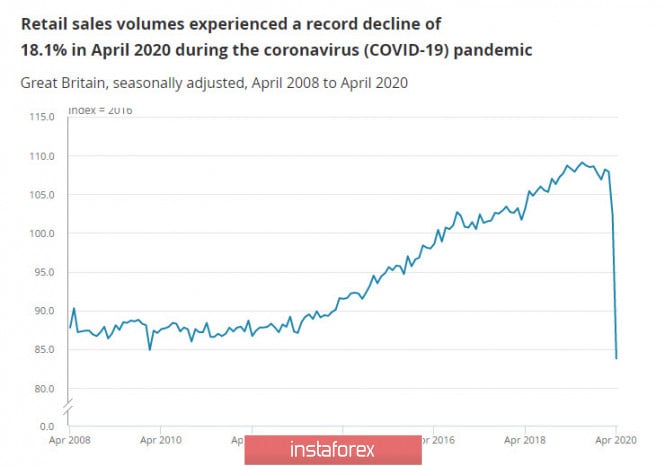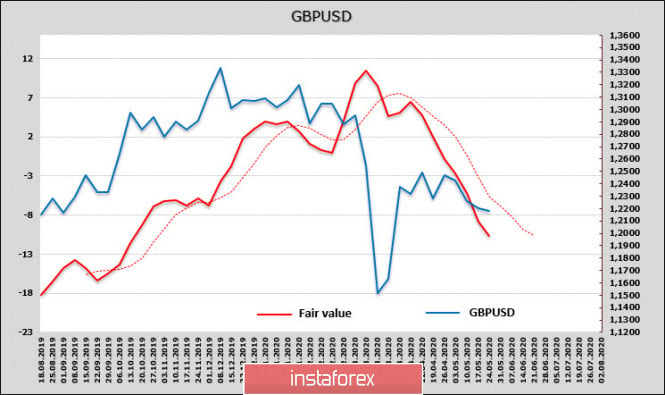The CFTC report, published on May 22, showed an increase in demand for the dollar, which led to a decline in the overall short position to 6.574 billion. At the same time, it should be noted that demand decline in demand occurred against the background of the first reports of a decrease in the spread of COVID-19 and a gradual exit from quarantine restrictions, which was regarded as preparation for a large-scale positive impulse.
However, both the minutes of the FOMC meeting and the speeches of Fed Chairman J. Powell were too careful to ignore the general tone. Apparently, the Fed is preparing for a large-scale decline in GDP, which may require not a reduction, but an expansion of QE and prolongation of support measures further in time at least until the end of 2021. Atlanta Federal Reserve publishes an updated forecast for GDP for the 2nd quarter, according to which the decline in GDP can be 41.9%, and emphasizes in red and white that the forecast is based solely on mathematical data and does not reflect the impact of COVID-19.

If so, we must proceed from the following. Regardless of the speed of exit from the quarantine measures, the US economy is in such a bad state that the probability of QE expansion is growing. If the Fed starts a policy of targeting yields, this will lead to an increase in the markets, but to a fall in the dollar, the US economy may need this scenario to get out of the recession.
EUR/USD
The net long position in the euro declined by 0.688 billion, the estimated fair price tends to decline.

So far, trends in the euro indicate a low probability of accepting Merkel-Macron's plan to create a fund of 500 billion euros. The lack of an agreed positive agenda puts pressure on the euro, which increases the probability of EUR/USD getting out of the range down. The resistance level of 1.1017 has survived, so now you need to wait for the support 1.0760 / 70 to be tested.
GBP/USD
Against the background of cautiously optimistic data from the US and the eurozone, British statistics look frankly bad. Gfk's consumer confidence index fell from 33p. up to 34p., the volume of public sector borrowings increased more than 4 times in April, while the forecast was significantly exceeded (61.4 billion against 35 billion), which inevitably leads to a faster growth of the budget deficit, the retail sales failure was also deeper than forecasts, which will automatically lead and a drop in GDP, and a decline in tax collection.

The pound's downward trend continues and there are no signs of a reversal yet. According to the CFTC report last Friday, the net short position of the pound increased by 405 million to $ 1.454 billion, speculators are set for further sales, the estimated fair price is already lower than the spot price and has a tendency to further decline.

The most obvious scenario for the UK economy is that economic activity will increase after lifting quarantine restrictions, but a return to normal levels of economic activity may be delayed. The latest NIESR forecast suggests that it may take the UK 18 months to restore production, but there is no guarantee that this period will be enough.
Moreover, attempts to increase the pound on May 17-19 are due solely to external factors. Negotiations on Brexit are at a dead end, the Bank of England is hinting at the probability of introducing negative rates and the expansion of QE, the probability of the last step is growing amid falling consumer activity and falling budget revenues.
The economic calendar for the pound this week is empty, Monday is a bank holiday, so the probability of moving to the side increases. At the same time, the overall position remains negative, the probability of moving to 1.2075 is high, consolidation below the level of 1.2150 will facilitate further sales of the pound. Selling is recommended.
The material has been provided by InstaForex Company - www.instaforex.com